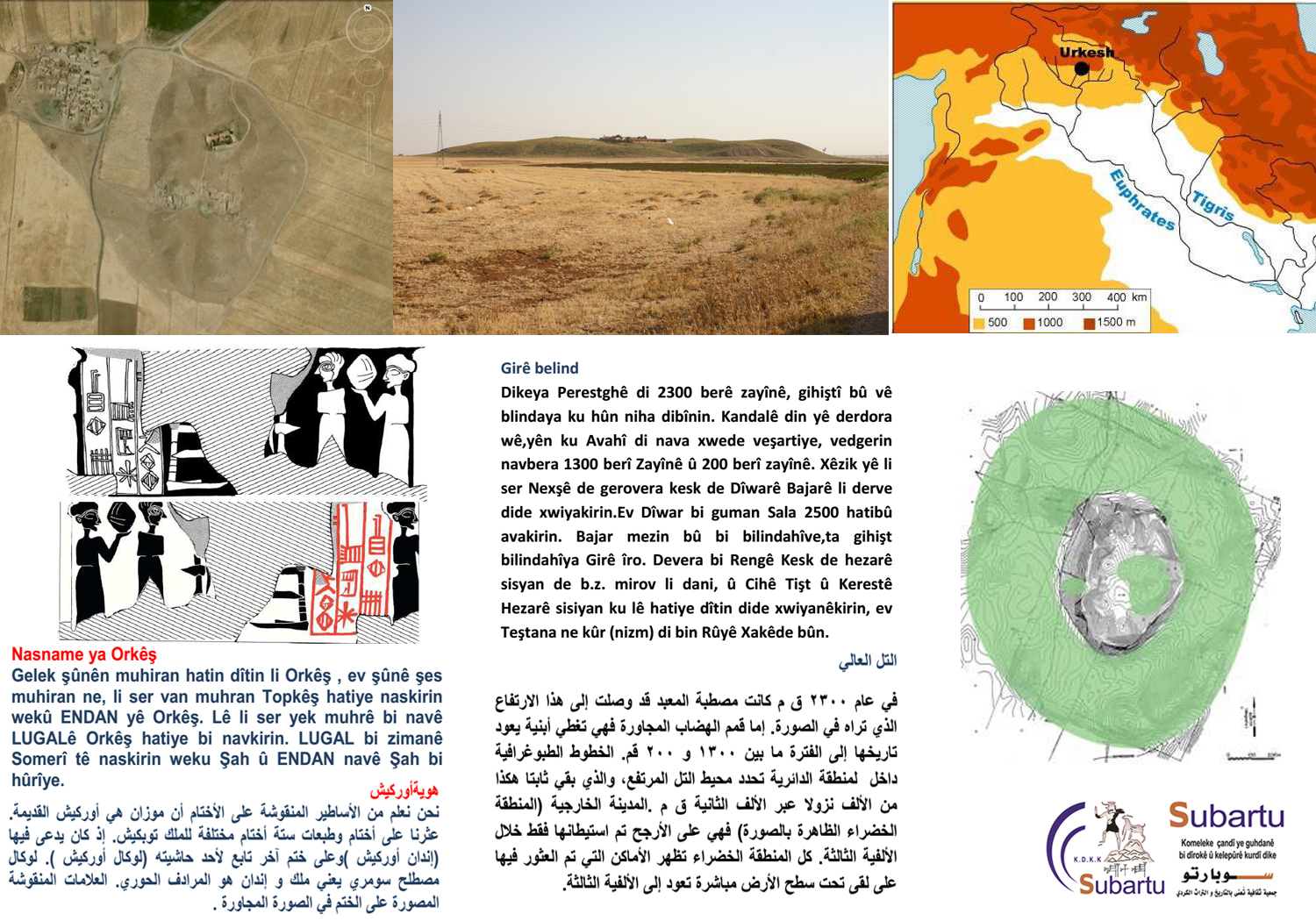Back to Subartu Exhibit
Next poster

|
Urkesh identity: We know from the seal legends that Mozan is ancient Urkesh. We found seals and the impression of 6 different seals of the king Tupkish. In these impressions he is called endan Urkesh. On another seal pertaining to one of his courtiers, he is called LUGAL Urkesh; lugal is a Sumerian term that means king, and endan is the Hurrian corresponding term. The high mound: In 2300 B.C. the temple terrace (BT) reached the height we see in the photo. The mounds around it, covers buildings that dates back to 1300- 1200 B.C. The topographical lines inside the circular area, defines the parameter of the high mound, which stayed like this all the way through the second millennium. The outer city (the area marked in green in the photo) was probably inhabited in the third millennium only. The green area shows the places where 3rd millennium artifacts were discovered just below surface. |